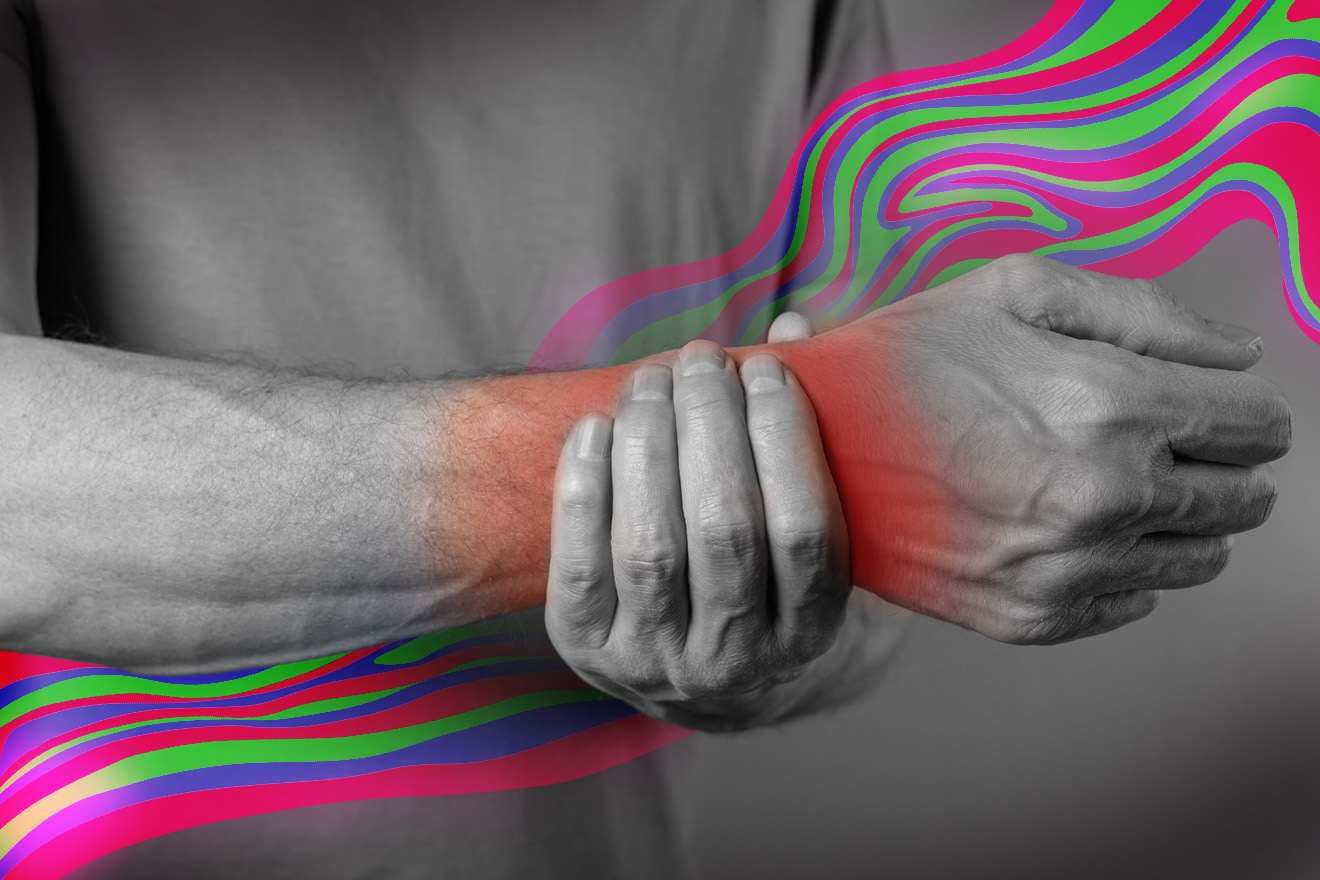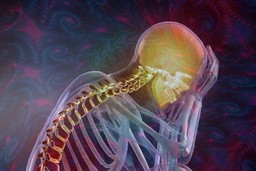As a chronic migraine sufferer, I can attest the residual pain controlling one’s daily existence. I was desperate for relief and stumbled upon the idea of microdosing with psychedelics. Administering psychedelics is not legal, not scientifically tested or proven to be a safe therapy method. However, to my surprise, not only did my depression lift, but my migraines completely disappeared.
I was intrigued to uncover the reason behind it. The studies reveal that psychedelics can effectively ease chronic pain associated with cluster headaches, fibromyalgia, phantom limb pains, and cancer diagnosis. Even a tiny dose or infrequent use, combined with emotional therapy, can yield positive results. The initial research results are promising and suggest there could be new ways to tackle chronic pain. It seems to be consistent with traditional treatments, yet considering consciousness in a whole new way.
Traditional Chronic Pain Management
Chronic pain affects millions and can take different forms, persisting long after an injury or illness. Traditionally, chronic pain was considered to be psychological and was referred to as “somatic symptom disorder.” However, research has revealed that this is not the case. Chronic pain can neurologically affect one’s ability to perform daily tasks and activities and can take an emotional toll, leaving sufferers feeling hopeless and alone.
Therapeutic Approaches Widely Adopted
Management can be challenging, often requiring a tailored approach that combines medications and therapies. While opiates and relaxants have long been considered mainstream options, their potential for addiction and recent changes in regulations have made them less accessible.
- oxycodone (OxyContin), hydrocodone (Vicodin)
- tramadol (Ultram)
- muscle relaxants such as cyclobenzaprine (Flexeril)
There are other alternative therapies, like physical therapy, massage, acupuncture, and cognitive behavioral therapy. These non-medication therapies are often recommended first for chronic pain, but access to these options may vary among patients.
People are prescribed antidepressants even though it is unclear how they work to relieve pain. Research suggests that these medications increase neurotransmitters in the spinal cord, reducing pain signals sent to the brain. Although, the full effects of antidepressants take several weeks to become effective.
- sertraline (Zoloft)
- fluoxetine (Prozac, Sarafem)
- citalopram (Celexa)
- escitalopram (Lexapro)
Medical practitioners sometimes combine antidepressants with anticonvulsants to amplify their pain-relieving capabilities. These multilayered combinations can be effective. However, it is essential to note that adding medications can make it more challenging to identify the original source as the complexity of the treatment increases.
- carbamazepine
- oxcarbazepine (Trileptal, Oxtellar XR)
- lamotrigine (Lamictal)
Investigating Core Causes and Exploring Minimal Dosages for Relief
University of California, San Diego
The Psychedelics and Health Research Initiative (PHRI) at UC San Diego is investigating the benefits of psychedelics for treating pain, specifically through trials for patients experiencing phantom limb pain. The team decided to conduct a psilocybin clinical trial for phantom limb pain after witnessing a patient experience significant relief from a single dose of psilocybin paired with a mirror therapy technique.
The double-blind studies are using Niacin as placebo to examine how the drug works and its effects on the brain when its combined with additional therapy like mirror visual-feedback. The team uses fMRI brain Imaging to study changes in brain networks before and after administering psilocybin. Dr. Timothy Furnish, director of the inpatient pain services, and Dr. Joel Castellanos, in charge of physical therapy and inpatient rehab, have discussed their findings in an informative blog on phantom limb pain here at Psychedelic Support. Dr. Furnish highlighted the importance of understanding the potential risks of long-term use as there is currently limited data on the long-term safety of these substances.
Latest Discoveries in Headache Disorders
Emmanuelle Schindler, MD, PhD, of Yale School of Medicine, is leading research on the potential of psilocybin as a treatment for cluster, migraine, and post-traumatic headaches. I regret not being aware of these studies before attempting my migraine rescue plan. Schindler’s studies show an enduring therapeutic effect in migraine headaches after a single administration of psilocybin.
Schindler’s recent study uses a small dose of psilocybin (10mg) one or two times to determine its effectiveness in treating migraines and to gain a deeper understanding of the underlying mechanisms. Subjects will receive two doses of either psilocybin or a placebo, spaced approximately seven days apart, and the researchers will measure markers of inflammation in the brain. This small-scale study is important because it will provide perhaps an efficient explanation for migraines and its remedies.
Brain Activity on Psychedelics, Enhancing Therapies
Brain modulation is the ability to change or influence the electrical and chemical activity in the brain. These approved techniques modulate brain activity to help alleviate psychological symptoms like depression or improve brain function.
- Transcranial Magnetic Stimulation (TMS)
- Transcranial Direct Current Stimulation (tDCS)
- Electroconvulsive Therapy (ECT)
Researchers are looking at the potential of psychedelics in treating chronic pain by the default mode network (DMN), which is active during rest and thought to be involved in self-reflection, mind-wandering, like daydreaming.
Follow your Curiosity
Sign up to receive our free psychedelic courses, 45 page eBook, and special offers delivered to your inbox.They believe that psychedelics can temporarily increase connections in the brain and change how patients relate to their pain. Dr. Joel Castellanos notes that psychedelics significantly impact brain modulation and may improve pain management.
More research is needed to understand the optimal dosing and frequency of taking these substances as therapy. It is intriguing to observe that psychedelics charge neural activity in the same brain areas triggered by medication and electrical stimulation therapies.
Flourishing Digital Education: Developing a Learning Resource
Dr. Peter S. Hendricks, Notable Researcher and Educator
Peter Hendricks, PhD, a Clinical Psychologist and Professor at the University of Alabama, has compiled his research and made it accessible through many resources, like this fascinating course on psilocybin and a vibrant podcast on the use of psychedelics for addiction control.
His most recent research explores how psychedelics can affect people’s well-being. The research suggests focusing on oneself while under the influence of psychedelics can lead to a deeper understanding of thoughts, emotions, and experiences. This can lead to a greater sense of self-awareness and insight into one’s mental and emotional state. It can also lead to a greater understanding of one’s place in the world and their relationship to stimuli, like pain.
Dr. Frederick Barrett Exploring Self-Actualization
Since 2013, Dr. Frederick Barrett’s research at Johns Hopkins University has been looking to gain an in-depth understanding of the unique elements that contribute to our coping mechanisms. His research focuses on the psychological and neurological mechanisms underlying the therapeutic effects of psychedelics in patients with mood and substance use disorders.
Dr. Barrett also has a library of educational resources, including a video on the intersection of neuroscience, psychedelic drugs, music, and nostalgia. His research has shown a strong connection between music and memory and how music elicits responses during a psychedelic experience, providing relief from negative emotions.
Transcending Chronic Pain: A Different Perspective, Positive Outlook
The locus of control theory is about how people perceive control over their lives. People can have either an internal or external locus of control. Having an internal locus of control is linked to better mental health outcomes. Dr. Castellanos suggests that those with an external locus of control would benefit the most from psychedelic therapy as it can help them develop a more internal focus, explained in this video clip.
My experience with psychedelics in treating chronic pain has been promising. Still, without the rigorous examination of a clinical study, I cannot assess the changes on an intricate level. Nevertheless, I am optimistic about the potential of these compounds to provide a more holistic approach to pain management, including less reliance on medication and a greater emphasis on mindfulness therapy.
Understanding the connection between our thoughts and pain is crucial in comprehending the mechanisms behind our brain responses. As Dr. Timothy Furnish states, chronic pain can become a part of one’s identity, and psychedelics may alter this internal narrative and alleviate the association of pain with the self. Overall, further extensive research is needed to fully understand the impact of psychedelics on chronic pain and the human mind, but the results are positively hopeful.







